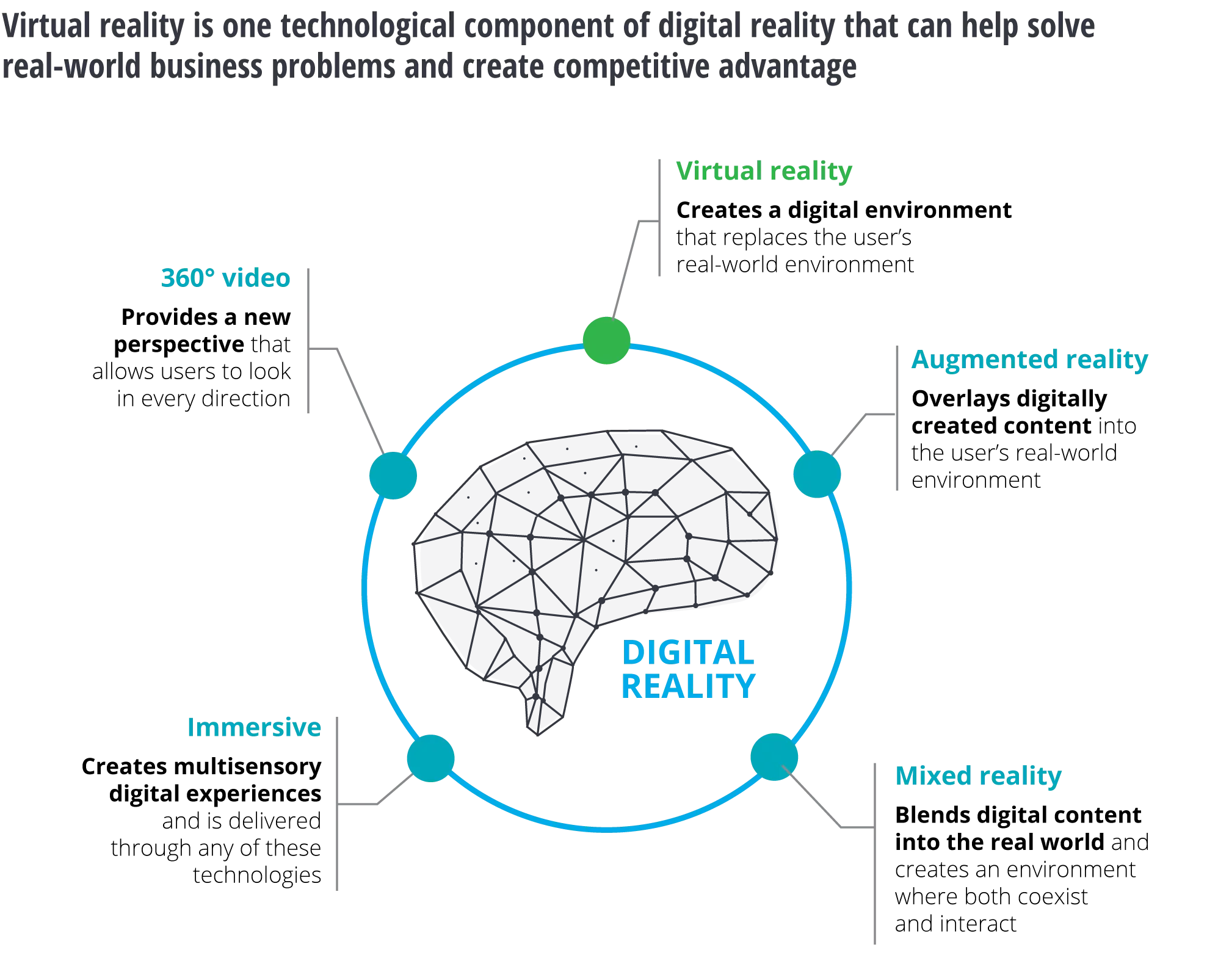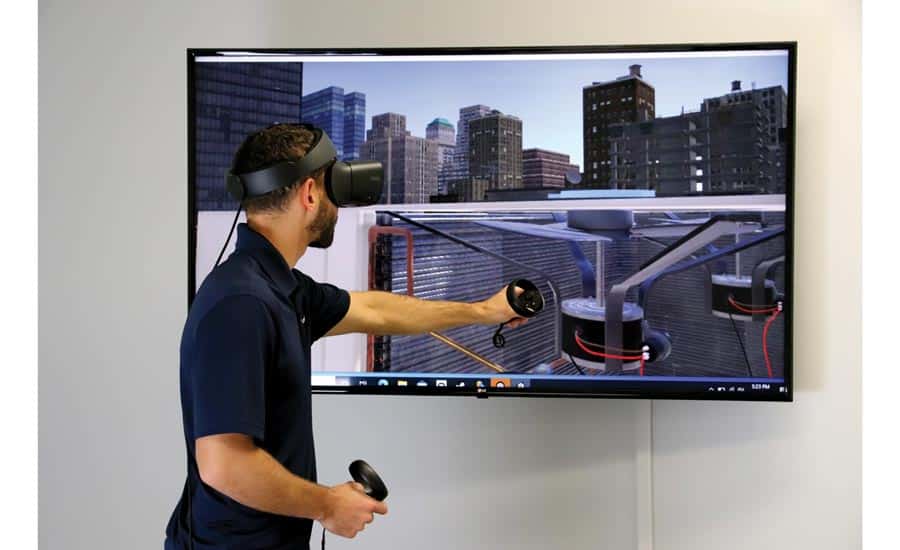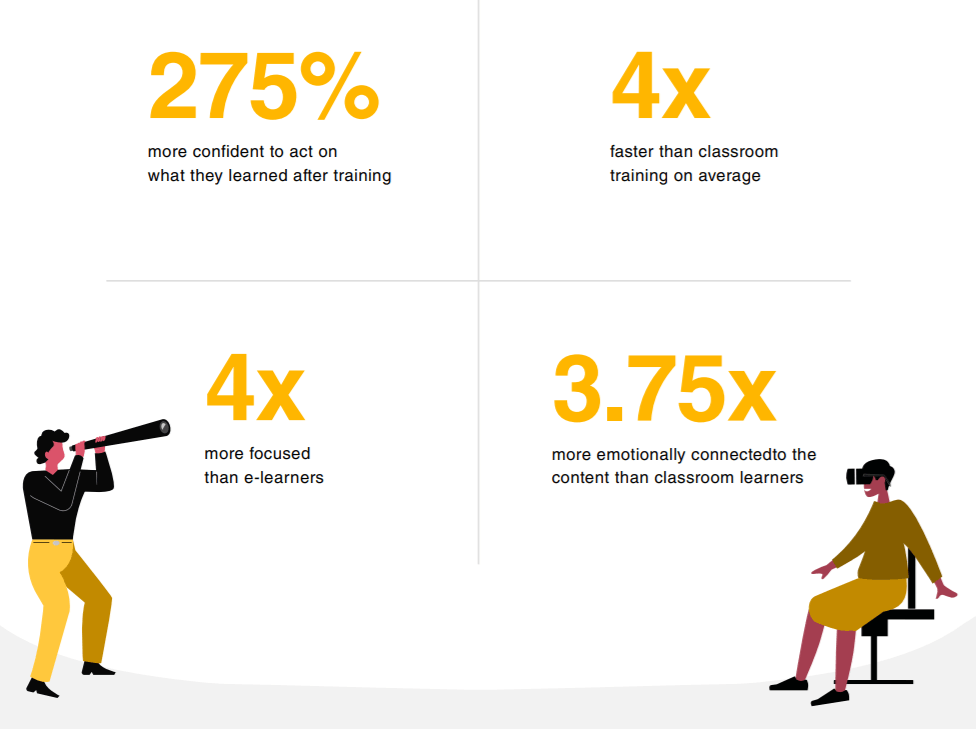Virtual Reality and its Role in the Future of Technical Education

Despite years of promotion, advertising, and discussion around the importance of skilled trades, those that are not involved on a day-to-day basis often continue to overlook, understate, or take for granted its critical role in our society and economy.
With a looming infrastructure bill hoping to add over $1 trillion to the US economy over the next 8 years and hundreds of thousands if not millions of jobs being added, the question becomes: do we have the skilled workforce in the country to accomplish this goal? According to Beverly Scott, the vice chair of the President’s National Infrastructure Advisory Council, “Absolutely not.”
We’re not here to hark on the skills gap, the “Great Resignation”, the disappearing of the middle class, or the national labor shortage plaguing all industrial sectors in this article; however, we will dive into some of the exciting technologies being used within education and training that attempts to address some of these problems.

While skilled trades is still often viewed through the lens of previous generations – where the wood shop classroom was in the basement of a school or portable buildings behind the football field, and the associated careers are seen as dungy, dark, and dangerous – much has changed in today’s technical education landscape. Just like technology being used in our daily lives has changed immensely over the past several years and decades, the technology and skills needed within the skilled trades has changed immensely.
So, the questions become: are we preparing students in the skilled trades programs in the same manner as we were previously? Have we changed the way we teach these programs to keep up with the changing skills (and changing technologies) of industry? Have we adapted the way we teach to also accommodate the changing demands of today’s young learners?
If skilled trades have changed to in add 1.5 million jobs per year, for the next 10 years(!), skilled trades in areas such as In our ever-evolving existence, its’s reasonable to see the need for innovative technological integration in all forms of education, but its more apparent in our technical and trade industries. The hands on, rugged nature of this work, has kept technological optimization at bay but no longer is that the case. This Industry has become a low-pressure zone for a new generation of advanced preparatory technologies and that fact is just beginning to manifest before our eyes.
Some of the remarkable implementations is the budding use of virtual reality or VR in welding, construction, HVAC, plumbing, manufacturing, and many other industries. VR allows educators flexibility in the situations and learning environments they expose their students to. Instead of being limited by the woes of physical equipment, educators can expose students to a massive variety of standard procedures, troubleshooting scenarios and the more fringe encounters they may have whilst working in the industry. This technology doesn’t replace physical systems, or the need get hands-on training experiences, but it’s a wonderful tool to expand teaching capabilities and to engage students in a unique way. Studies from the classroom and within industry have shown increased retention and application ability after training alongside VR exercises. With up to a 30% boost in initial retention it’s no wonder why VR is making an entrance into the sphere of education.
To gain a deeper understanding of how VR is being utilized in Career and Technical Education to great success, let’s look at the web-based training platform, SkillMill. SkillMill is an online training ecosystem for Electrical, HVAC, Plumbing, Facilities Maintenance, and other trade skills. They offer fully immersive 3D training with step-by-step guidance in key areas of these trades. all the way to advanced procedures and testing on the back end of the curriculum. With a wide variety of VR integration and a seamless student to instructor architecture, SkillMill has claimed their spot in education and industry. VR integration is a difficult task as is, but SkillMill has translated a dozen different industries worth of curriculum into this environment. The shear depth and practicality of what they offer presents a lot of flexibility when it comes to custom curriculum and specific certifications users may want to obtain. It will be interesting to see how this software permeates through education and industry as time goes on.

If we shift our focus from broad view utility to a more specialized solution, we find ABB’s RobotStudio. This program is the most technically impressive, VR/AR integrated, exploratory, and educational robotics and manufacturing simulation software on the market. RobotStudio’s functionality is geared more towards industry but is still perfectly applicable within the classroom. Some of the program applications include virtual meetings, virtual commissioning, and digital twin capabilities. This allows user to interact with ABB robots individually or within the context of a manufacturing setup in 3D software environments and VR/AR. As mentioned, RobotStudio features augmented reality, which is a technology that manifest digital elements as if they were in the same room as you. The software contains the actual program architecture that ABB’s robotics uses, allowing them to make near perfect digital representations of their systems.
RobotStudio contains many more use cases and functionalities, but I’d like to look at it through the lens of education briefly. The industrial nature of software makes it great for students who are serious about robotics and advanced manufacturing. It gives students and educators the flexibility and freedom to articulate how they’d like to interact with different systems. Whether it’s a single collaborative robot in augmented reality or a dynamic manufacturing process in VR, users are given the most autonomous and realistic work environment to date.
This gives students tangible experience and reference without the overhead or safety concerns that may parallel their education. Another advantage to RobotStudio is the amount of exposure a student can obtain without being limited by the shortcomings of physical reality. A multitude of individual robots, predesigned processes, or the freedom to create your own environment give students unlimited possibilities within education. Other features allow users to explore the backbone of advanced manufacturing and the setup and troubleshooting that comes with integrating robotics within those systems. And almost all those features are VR compatible, adding a layer of realism and educational possibilities to an already dynamic program.
Virtual Reality was a budding technology a decade ago, but no it has firm foothold in consumer electronics and is making its way to new markets. Like many other technologies, VR is slowly beginning to matriculate into education and industry as its value is realized. Although we’ve seen much innovation already, I think VR has just found its footing outside the realm of recreational use and we will see rapid growth in this area. Market demand and time will ultimately tell, for now we just sit back and ride the wave of inevitability towards the plot of WALL-E.
